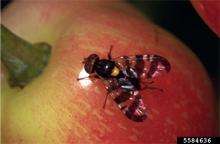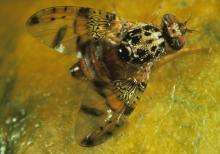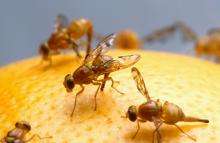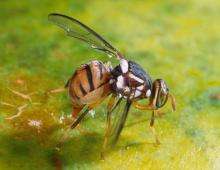Exotic Fruit Flies
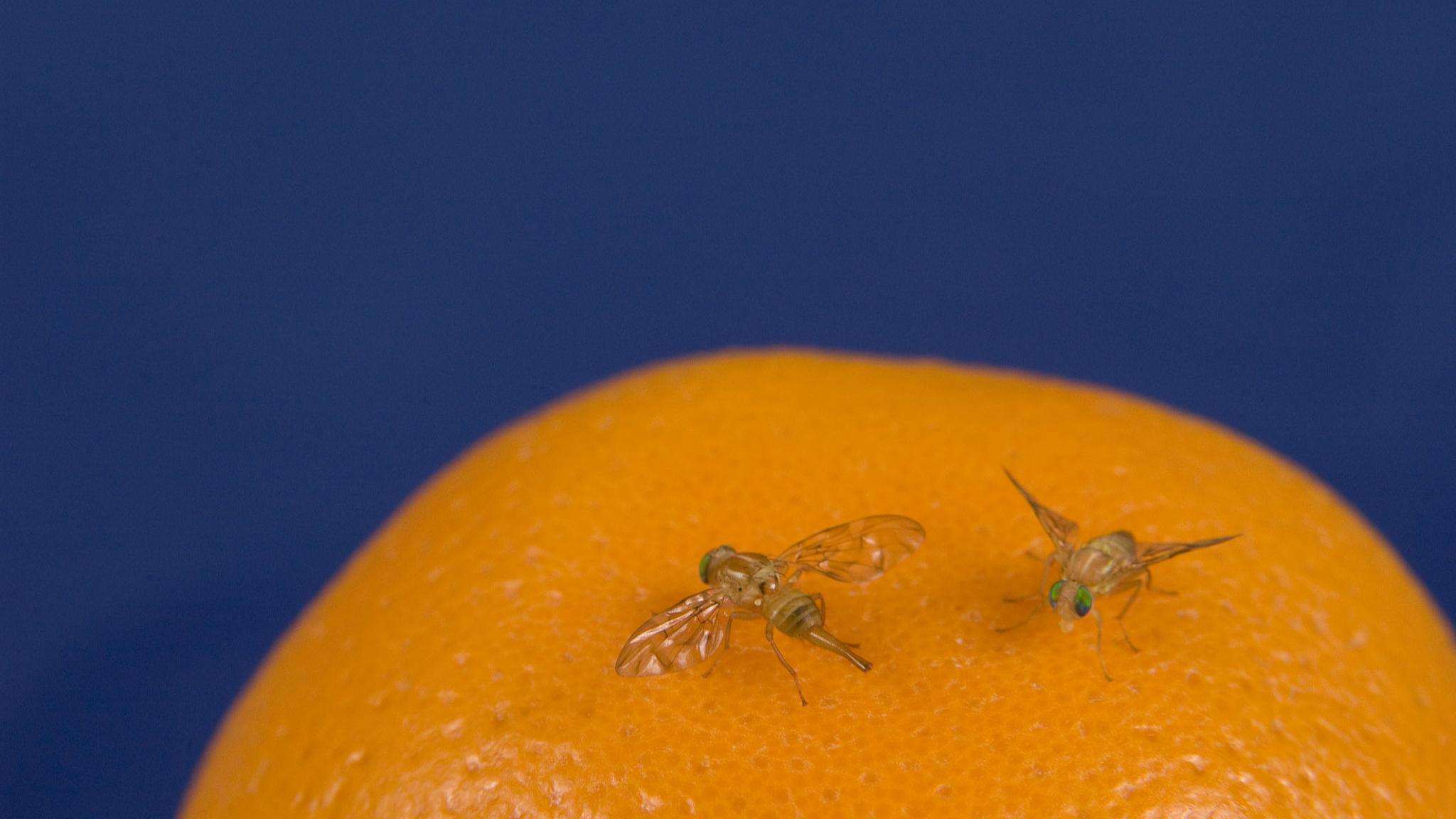
Exotic fruit flies are among the world's most devastating pests of fruits and vegetables. They attack over 400 different types of plants, destroying entire crops, disrupting trade, and causing major financial losses for affected producers and industries.
Fruit flies pose a significant threat to U.S. agricultural production and our economy if left unchecked and allowed to spread. The Fruit Fly Exclusion and Detection Programs protect the health and value of American agricultural resources threatened by the establishment of exotic fruit fly populations.
Pest Tracker: Find Pests by State or Region
Find out if your State has a Federal quarantine and/or State-level quarantine for any hungry pests.
Controlling Exotic Fruit Flies
APHIS protects our Nation's crops from exotic fruit flies through the Fruit Fly Exclusion and Detection Program. Our goal is to prevent fruit fly populations from becoming established or spreading within the United States.
To achieve this goal, APHIS cooperates with our State partners to carry out fruit fly control programs. We maintain a sensitive fruit fly detection network of more than 160,000 traps across four States and one Territory: California, Florida, New York, Texas, and Puerto Rico. When outbreaks occur, we take immediate action to eradicate them.
Our eradication programs use an integrated pest management strategy that includes a range of control methods, both chemical and nonchemical. These methods have effectively eradicated spot infestations of fruit flies in the United States since 1984. Eradication work may also include enforcing quarantines, placing and checking additional fruit fly traps, removing fruit at infested and neighboring properties, and other related efforts.
Plans and Guidelines
- Fruit Fly Exclusion and Detection Program Strategy (FY2024-2028) (1.18 MB)
- Cooperative Fruit Fly Emergency Response Triggers and Guidelines (198.25 KB)
- National Exotic Fruit Fly Detection Trapping Guidelines (1.11 MB) (2015)
Regulatory Information
Spread the Word
Host Lists
- Fruit fly (Bactrocera tau) (202.75 KB)
- Malaysian fruit fly (Bactrocera latifrons (24.14 KB))
- Mango fruit fly (Bactrocera frauenfeldi (31.59 KB))
- Melon fly (Bactrocera cucurbitae (188.6 KB)
- New World guava fruit fly (Anastrepha striata (131.04 KB))
- Peach fruit fly (Bactrocera zonata) (26 KB)
- Sapote fruit fly (Anastrepha serpentina) (214.51 KB)
- West Indian fruit fly (Anastrepha obliqua (26.14 KB))
- White striped fruit fly (Bactrocera albistrigata (13.82 KB))
Archived Plans and Guidelines
APHIS has historical documents available on the following pests: Malaysian fruit fly, melon fruit fly, peach fruit fly, Queensland fruit fly, and South American fruit fly. This includes action plans and response guidelines we published in the past that are now outdated.
To request copies of these materials, contact your State plant regulatory official.


